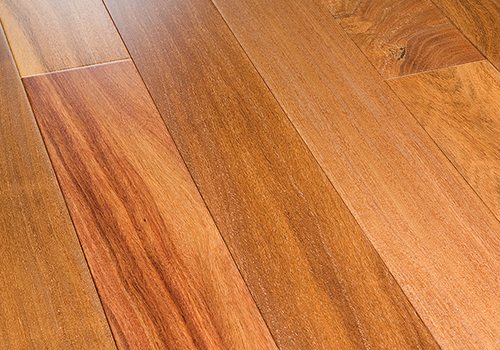Brazilian Cumaru Decking
Cumaru Is Used For Decking, Cabinetry, Flooring, Furniture, Docks, And More!
Cumaru Wood Is One Of The Most Reliable & Rot-Resistant Wood Species Available On The Market!
Why Choose Cumaru for Decking & Siding?
Natural Strength & Durability
Cumaru (Brazilian Teak) is one of the world’s toughest hardwoods—nearly as hard as ipe—with a Janka hardness of around 3,500 lbf . This makes it incredibly resistant to wear, weather, rot, insects, and mold—perfect for high-traffic decks, exterior siding, fences, pergolas, or even boardwalks
Long-Term Value & Resilience
Unlike softwoods, Cumaru can last 50+ years without preservatives. Its natural oils and dense structure guard against warping, splitting, and fungal growth, waiting decades before needing refinishing.
Distinctive & Appealing Aesthetic
Cumaru’s rich palette—from golden tan to deep reddish-brown—features captivating grain textures and natural color variation. Over time, it weathers to a sophisticated silver-grey patina for those seeking a reclaimed-wood look.
Low Maintenance & Versatility
A simple soap-and-water clean plus occasional UV-resistant oil restores its lively color. Uncoated, the wood will elegantly grey; oiled, it retains its warm tones with minimal upkeep . Plus, it’s versatile—ideal for both horizontal decking and vertical siding .
_____________________________________________________________________________________________
Common Names: Cumaru, Brazilian Teak
Scientific Name: Dipteryxodorata
Origin: Northern parts of South America
Tree Size: 130-160 ft (40-50 m) tall, 3-5 ft (1-1.5 m) trunk diameter
Average Dried Weight: 68 lbs/ft3 (1,085 kg/m3)
Rot Resistance:
Cumaru has outstanding durability and weathering properties. This wood is rated as decay resistant, but it may be vulnerable to some insect attacks.
Color & Appearance:
Cumaru heartwood tends to be medium to dark brown and have a red or purple hue at times; some pieces may show streaks of yellow or green brown.
Grain &Texture: The grain is interlocked with medium texture and is waxy to the touch.
Endgrain: Cumaru is porus and diffuse with solitary or radial multiples and large pores in random arrangement. Heartwood mineral or gum deposits can be present. It is parenchyma lozenge, aliform, and confluent. The wood is marginal with narrow rays, spaced somewhat close.
Workability:
Cumaru tends to be hard to work because of its density and interlocked grain. If the grain is not overly interlocked, however, Cumaru can be surface-planedfor a smooth finish. This wood contains silica that will have a blunting effect on tool cutters. Due to density and high oil content, Cumaru can present problems in gluing. Pre-boring is suggested when nailing or screwing the wood.
Odor:
Cumaru has a light vanilla or cinnamon scent when being worked.
Allergies and Toxicity:
Aside from standard health risks associated with any type of wood dust, no additional health issues have been associated with Cumaru.
Pricing & Availability:
Cumaru usually is inexpensive for an import wood. Cumaru, like Jatoba, is a great value as a low-cost lumber with excellent strength and hardness.
Sustainability:
The Cumaru species is not listed in the CITES Appendices or on the IUCN Red List of Threatened Species.
Common Uses:
Cumaru wood is often used for cabinetry, flooring, furniture, heavy construction, railroad ties, docks, handles, bearings and similar turned objects.
Comments:
Wood of the species Dipteryxodorata is usually called Cumaru among woodworkers, but is sometimes referred to as “Brazilian Teak,” especially when used for hardwood flooring. [Note that Brazilian Teak is not related to the wood most commonly called Teak, Tectonagrandis.] Cumaru also can be called by the name “Tonka Bean.” This tree is often cultivated for the vanilla-cinnamon scented seed (tonka bean) that has a chemical compound called coumarin. Cumaru lumber is exceptionally stiff, hard, and strong, which makes it suitable for a variety of applications. It is sometimes substituted for the scarce wood Lignum Vitae. Cumaru heartwood fluoresces under blacklight, allowing it to be distinguished from Ipe.







